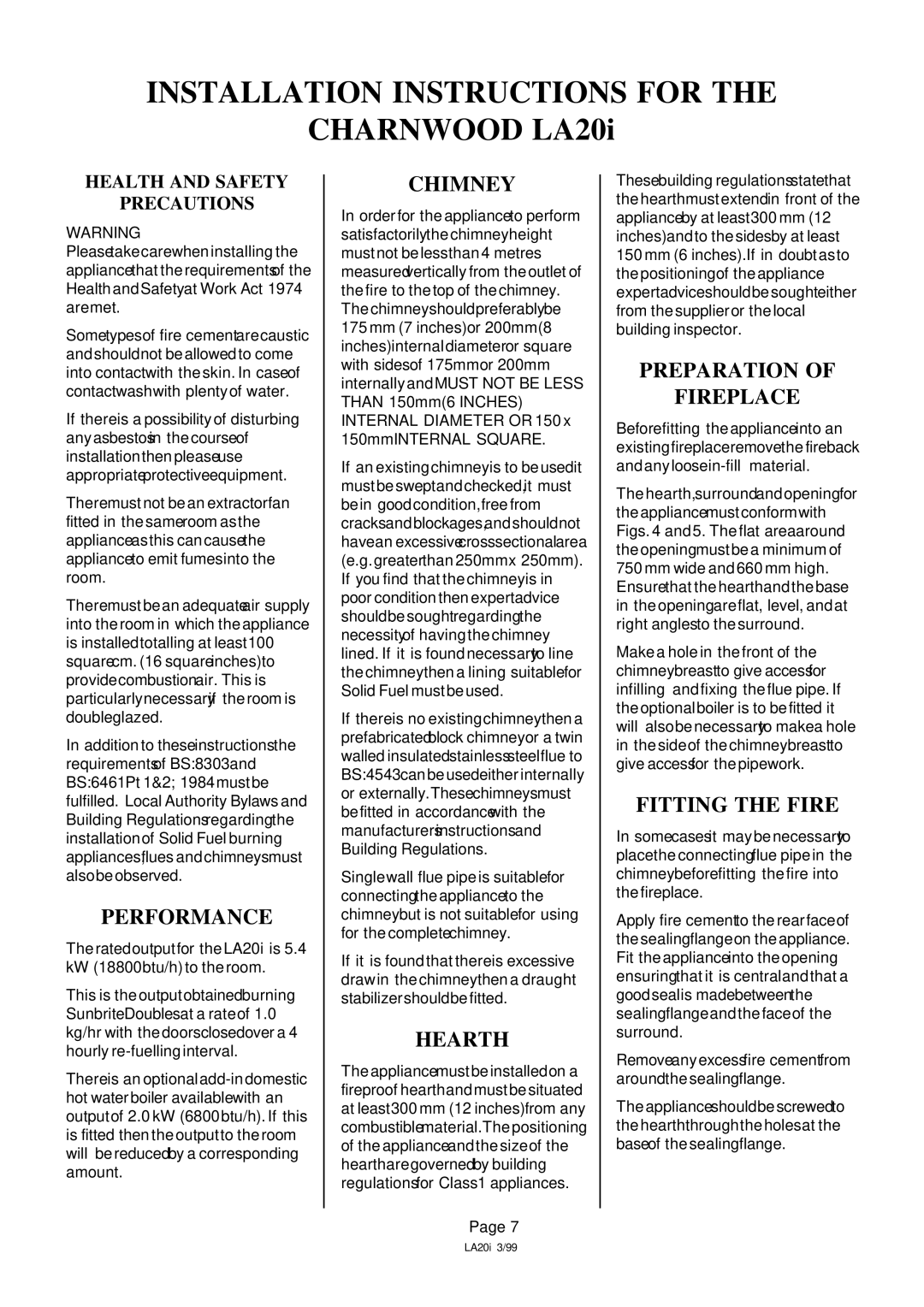Roomheater specifications
The Charnwood Roomheater is a pinnacle of modern heating technology, designed to deliver efficient warmth and comfort in any home environment. With its elegant design and robust construction, this room heater stands out not only for its heating capabilities but also for its aesthetic appeal.One of the standout features of the Charnwood Roomheater is its advanced combustion technology. The unit employs a highly efficient burn process that maximizes heat output while minimizing smoke and emissions. This makes the Roomheater an environmentally conscientious choice, allowing homeowners to enjoy warmth without compromising their commitment to sustainability. The airwash system further enhances the experience by keeping the glass door clean and clear, providing an unobstructed view of the beautiful flames.
Another key characteristic of the Charnwood Roomheater is its versatile heating options. The room heater is designed to accommodate various fuel types, including wood and multi-fuel options, providing flexibility for users depending on their preferences and availability of resources. This adaptability ensures that it can function effectively in a variety of settings, from cozy living rooms to more open spaces.
The Roomheater’s build quality is exceptional, featuring durable materials that can withstand high temperatures and ensure longevity. The steel body is both strong and resilient, while the manufacturing process emphasizes precision, resulting in a tight, efficient seal that enhances heat retention and reduces heat loss.
Ease of use is another important aspect of the Charnwood Roomheater. With simple controls and a user-friendly design, homeowners can easily adjust the heat output to suit their comfort levels. The large viewing window not only adds to its charm but also allows users to monitor the burning process, ensuring optimal performance.
In summary, the Charnwood Roomheater is a perfect blend of efficiency, style, and usability. Its innovative technologies, including advanced combustion and airwash systems, coupled with its durable construction and flexible fuel options, make it a top choice for those seeking an effective and eco-friendly heating solution. With this room heater, homeowners can enjoy a warm and inviting atmosphere while contributing to a healthier planet.

